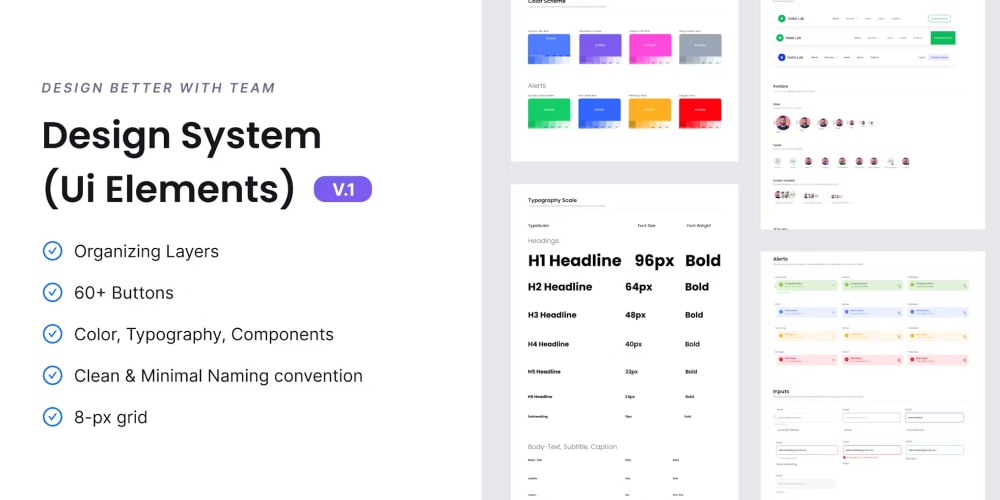The integration of technology in healthcare is essential for enhancing patient care and operational efficiency. Patient portals, which provide patients with easy access to their health information and facilitate better communication with healthcare providers, have become a cornerstone of modern healthcare applications.
For healthcare providers, CEOs, and business leaders, understanding the benefits of these portals is crucial for staying competitive and delivering high-quality, patient-centered care.
In this blog, I will delve into the overview of patient portal development, the advantages of developing a patient portal in your healthcare application, and its potential to transform the patient experience and streamline your operations.
Overview of Patient Portal Development
A patient portal is an online platform that allows patients to easily access their personal health information and medical records. These portals are usually integrated into existing healthcare applications, providing a seamless interface for patients to communicate with their healthcare providers. The patient portal development involves several key components:
User-Friendly Interface: Patients need the portal to be easy to use and navigate so they will want to use it.
Secure Access: Ensuring strong security measures are implemented to safeguard sensitive patient data against unauthorized access.
Integration with Electronic Health Records (EHR): Seamlessly integrating with EHR systems to provide real-time access to medical records.
Appointment Scheduling: Enabling patients to book, modify, or cancel appointments online.
Communication Tools: Enabling secure messaging between patients and healthcare providers.
Educational Resources: Providing access to educational materials, such as articles and videos, to promote patient education and self-care.
Advantages of Patient Portal Development
Patient portal development offers numerous advantages for both patients and healthcare providers:
1. Enhanced Patient Engagement
Patient portals enable patients to actively participate in their healthcare by offering convenient access to their medical records, test results, and treatment plans. This increased engagement can lead to better adherence to treatment protocols and improved health outcomes.
Additionally, features like reminders for medications and follow-up appointments can help patients stay on top of their health needs. By fostering a sense of ownership over their health data, patients are more likely to engage in preventive care and wellness activities, leading to a proactive approach to health management.
2. Improved Communication
Secure messaging features facilitate direct communication between patients and healthcare providers, reducing the need for phone calls and office visits. This conserves time while improving the patient-provider relationship. Timely communication can be critical in managing chronic conditions or addressing acute health concerns.
Patients can ask questions, report symptoms, and receive guidance without the delays often associated with traditional communication methods. This continuous, real-time interaction ensures that patients feel supported and informed, which can lead to better health outcomes.
3. Convenient Access to Information
Patients can access their health information anytime, anywhere, which is particularly beneficial for those with chronic conditions who need to monitor their health regularly. This convenience also extends to managing appointments, prescription refills, and billing.
Features such as lab results, immunization records, and health summaries being available at the click of a button empower patients to make informed decisions about their care. Additionally, access to personalized health education materials helps patients understand their conditions and treatment options, promoting better self-care practices.
To let the patients get that information without struggle, Partnering with a reputed patient portal development company which experienced in developing healthcare applications is a recommended way to create a user-friendly application.
4. Streamlined Administrative Processes
Patient portals can automate several administrative tasks, such as appointment scheduling and billing, thereby reducing the workload on healthcare staff and minimizing the risk of errors. Automated appointment reminders and online payment options enhance the efficiency of administrative operations.
This reduces administrative costs and allows healthcare staff to focus more on patient care rather than paperwork. Moreover, real-time updates and synchronization with EHR systems ensure that all parties have the most current information, reducing the potential for miscommunication and administrative bottlenecks.
5. Better Care Coordination
Patient portals enable improved coordination among healthcare providers by offering a centralized platform for health information. This is particularly crucial for patients who are receiving care from several specialists.
Shared access to patient records ensures that all providers are on the same page, which is crucial for developing cohesive treatment plans and avoiding redundant tests or conflicting prescriptions. Enhanced care coordination improves patient outcomes reduces the likelihood of medical errors and enhances the overall quality of care.
6. Increased Patient Satisfaction
Patient portal development offers convenience and transparency that leads to higher levels of patient satisfaction. Patients appreciate the convenience of accessing their health information and communicating with their healthcare providers.
Satisfaction is further boosted by the reduced waiting times for answers to their health-related queries and the ability to manage their care more independently. Features such as the ability to provide feedback or rate their experiences can also help healthcare providers continually improve their services, creating a positive feedback loop that benefits patients and providers.
7. Cost Savings
By reducing the need for in-person visits and streamlining administrative tasks, patient portal development can lead to significant cost savings for healthcare organizations. Fewer physical visits translate to lower operational costs, and the automation of administrative functions reduces staffing expenses.
Additionally, improved patient engagement and adherence to treatment plans can lead to better health outcomes, thereby reducing the need for costly emergency interventions and hospital readmissions. These cost savings can be reinvested into further improving healthcare services and expanding access to care.
Final Thoughts
Patient portal development for your healthcare application is a strategic move that can significantly enhance patient engagement, improve communication, and streamline administrative processes. As healthcare continues to evolve in the digital age, patient portals will play an increasingly important role in delivering high-quality, patient-centered care.
By investing in robust and user-friendly patient portal development, healthcare organizations can improve patient outcomes and achieve greater operational efficiency and patient satisfaction.



















